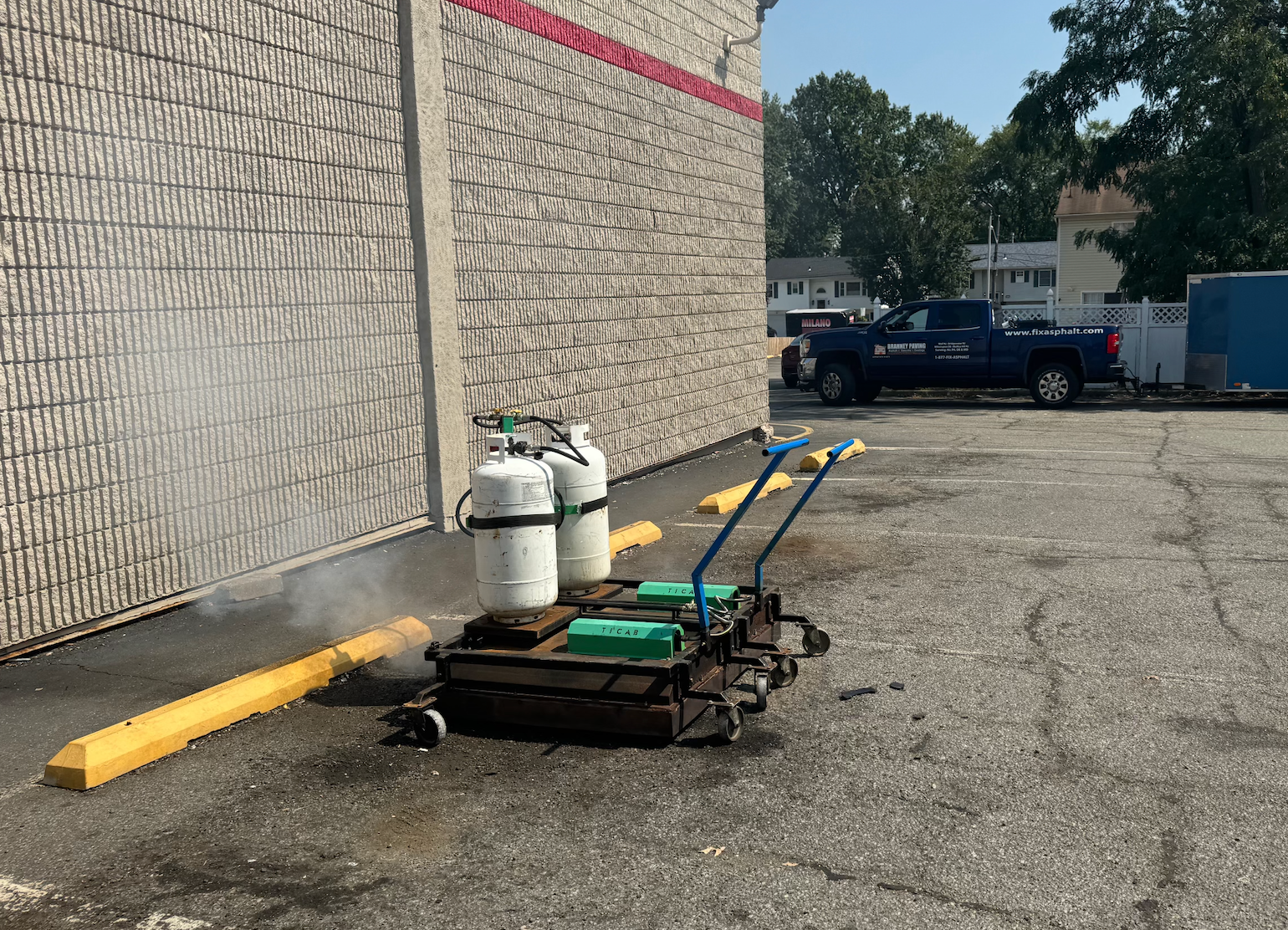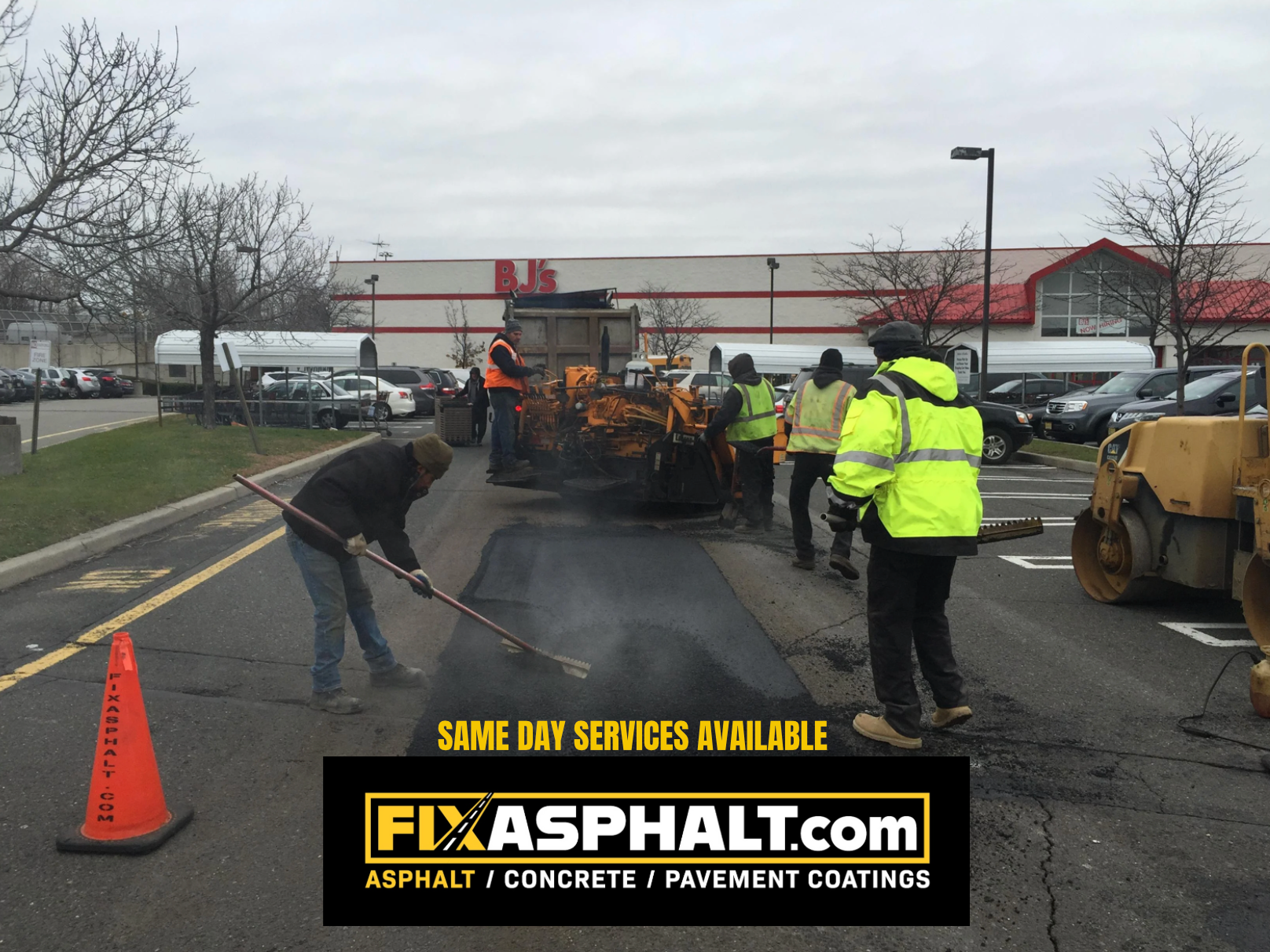Kristina Brahney • September 16, 2024
What Is Infrared Asphalt Repair?

Infrared Asphalt Repair In NJ
Infrared asphalt repair is a highly economical approach to fixing existing asphalt in NJ. Over the last ten years, this technique has gained notable popularity due to its adaptability and eco-friendly nature as an alternative to traditional removal and replacement methods. It's crucial to understand that while infrared repair effectively tackles various problems such as potholes, oil spots, low and high spots, settling around utility structures, trip and fall risks, and sunken utility repairs, it is not meant for addressing base failures or repairing asphalt affected by base issues in NJ.
Infrared asphalt repair is a specialized technique for correcting flaws in your parking lot. By leveraging infrared technology alongside hot-mix asphalt, it produces a seamless restoration of your asphalt pavement.
This method offers a more enduring solution compared to conventional removal and replacement options, and it is also environmentally friendly.
As property owners and managers, you may have noticed that winter weather can be particularly harsh on your asphalt parking lot.
The cold months can lead to the formation of potholes, alligator cracks, uneven surfaces, and other complications due to the freeze-thaw cycle, as well as aggressive chemicals and deicers. However, there’s no need for concern, as these issues can be effectively addressed using infrared technology. Infrared asphalt repairs can be carried out throughout the year, which is vital since parking lot problems can arise at any time, not just during favorable weather conditions.
What Are The Advantages Of Choosing Infrared Asphalt Repair?
One of the key advantages of infrared asphalt repair is its ability to create a thermal bond that resists water and ice. This unique property ensures that the repaired area remains durable and offers long-lasting results, providing the best value in asphalt repair compared to other methods. Unlike traditional repairs that often require frequent repetition, infrared repair offers a cost-effective solution that minimizes the need for ongoing maintenance.
Furthermore, one of the standout benefits of this method is the minimal disruption it causes. During the repair process, only the specific areas being repaired are coned off, allowing traffic flow to continue uninterrupted. This not only reduces downtime but also ensures that customers and employees can access the area without any inconvenience.
In terms of efficiency, infrared asphalt repair excels. By utilizing the innovative 'Pinpoint Pave' technique, repairs are carried out in small sections, typically around 35 square feet, at a time. This approach enables faster completion times, with the repaired surface being ready for use within 1-2 hours. This swift turnaround is particularly advantageous for high-traffic areas or locations that require minimal downtime.
Moreover, infrared asphalt repair is environmentally friendly, earning it the reputation of being the 'green' choice. The process involves recycling the existing asphalt in place, eliminating the need for excavation and costly disposal. By reusing the asphalt that is already in place, this method significantly reduces waste and contributes to sustainability efforts, making it an environmentally conscious option.
Ultimately, choosing infrared asphalt repair ensures not only a quick and efficient solution but also a long-lasting one. In less than 30 minutes, a pothole can be replaced with a newly paved surface, providing a seamless finish that minimizes the risk of water and ice undermining the repair work. By opting for infrared repair, you can have peace of mind knowing that your asphalt surfaces will remain durable, while also benefiting from its eco-friendly attributes
Top Questions About Infrared Asphalt Repair?
Why is a traditional repair with a seam not as effective?
Traditional repairs with seams are not as effective because water and ice can find a way to undermine the repair over time. In contrast, infrared asphalt repair creates a seamless thermal bond, which reduces the risk of water and ice damage, offering a more durable and reliable solution.
How does infrared asphalt repair contribute to environmental sustainability?
Infrared asphalt repair is environmentally sustainable because it recycles the existing asphalt in place. Unlike traditional methods that require excavation and hauling away old asphalt, infrared repair reuses the asphalt already present, reducing waste and contributing to a greener approach to asphalt repair.
How long does it take for repairs to be drivable after infrared asphalt repair?
Repairs using infrared asphalt repair can typically be driven on within 1-2 hours. This means that the repaired surface becomes usable relatively quickly, reducing any inconvenience caused by extended downtime.
How does infrared asphalt repair minimize downtime and disruption?
Infrared asphalt repair minimizes downtime and disruption by only coning off the areas that are being repaired. This allows traffic flow to continue smoothly, ensuring that customers and employees can still access the area without significant interruptions.
How does infrared asphalt repair compare to other methods in terms of value?
Infrared asphalt repair offers better value compared to other methods. Unlike some other methods that may need to be repeated every year, infrared repair provides a long-lasting solution, saving costs in the long run.
What is the advantage of a thermal bond in infrared asphalt repair?
The advantage of a thermal bond in infrared asphalt repair is that it creates a durable surface that resists water and ice. This ensures that the repair remains intact and provides the best value in terms of asphalt repair.


